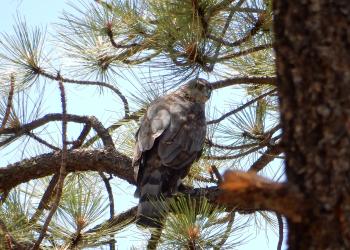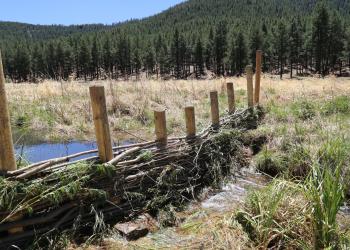Natural Resources
Effective beginning 06/04/2025: This website, and all linked websites under the control of the agency is under review and content may change.
It takes a lot of work to balance everyone's needs as we maintain the amazing landscapes, wildlife and other resources found on the Santa Fe National Forest. We are dedicated to sustainably managing the Santa Fe National Forest's natural resources for future generations. Its resource management program encompasses a wide range of activities aimed at maintaining the health, diversity, and productivity of forest ecosystems.
Without this effort, will there be a forest for future generations?
Resource Management
Animals and Plants

Learn about Santa Fe National Forest wildlife and their habitats.
Archeology and Cultural Resources

There are many cultural and historic resources on the Santa Fe National Forest that are significant to local communities, the State of New Mexico, the Southwestern region, and the United States.
Fisheries

The fisheries program on the Santa Fe is working hard to recover native aquatic species which live in nearly 1000 miles of streams and many fish-bearing lakes.
Forest Health

A top priority is forest health. The forest utilizes prescribed fires to reduce fuel loads, preventing destructive wildfires. Regular monitoring and management of pests and diseases help to maintain the overall health of the forest. Additionally, thinning and salvage operations are conducted to remove unhealthy or overcrowded trees, improving forest resilience and reducing the risk of catastrophic fires.
Forest Management

Forest management focuses on managing vegetation, restoring ecosystems, reducing hazards, and maintaining forest health.
Rangeland and Grazing

Cattle grazing on the open range is an image that long pre-dates the establishment of the Santa Fe National Forest. We work to prevent over-grazing and to protect the forest.
Water, Air & Soil

Water resources are essential for the health of the forest and surrounding communities. The Santa Fe National Forest implements measures to safeguard water quality and quantity, such as watershed protection and erosion control. Hydrologic monitoring helps track water flows and conditions, enabling informed decision-making.
Air quality has long been recognized as an important resource on national forests. The public values the fresh air and sweeping views that national forests can provide. Poor air quality can also impact other values that the public cares about such as forest health, water quality, and fisheries.
The Santa Fe National Forest uses soil condition as a descriptive indicator of general soil health. Soil condition is based on the primary soil functions of soil hydrology, soil stability, and nutrient cycling.



